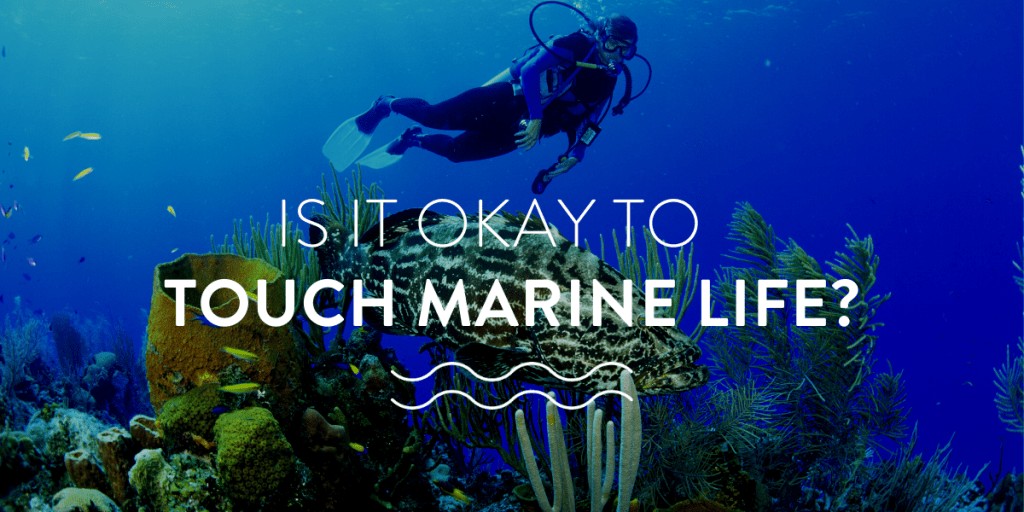Here at Ocean Mimic we love the water and all marine life. We particularly love diving and snorkelling. We love exploring the underwater world. It provided the inspiration for all our swimwear designs. So we’re often asked ‘is it okay to touch marine life?’. The short answer is NO.
The longer answer provides some important perspectives and safety warnings. While it’s human nature to want to touch things – we are after all a tactile species – doing so can have detrimental impacts for marine life and for you.
Don’t touch, tease or take!
The old saying, look but don’t touch, is certainly applicable underwater. For a start, we don’t know our own strength. We are buoyant underwater and can forget that when we touch or prod a creature we are doing so with force. Creatures such as starfish, sea cucumbers and corals are extremely delicate and fragile. It doesn’t take much for us to damage their tiny structures.
Keeping your hands to yourself is as much for your safety as the safety of the marine life. Don’t be surprised if the creature you’re poking attempts to defend itself. Morays, crabs, mantis shrimp and trigger fish have all be known to defend not only themselves, but their territory under water. Most marine life is not inherently aggressive, but get too close and they can and will attack.
You’ll notice that some creatures won’t attack, but rather will move away from you when they feel threatened. Chasing animals is one way to guarantee you won’t see them again. Rather than following frightened marine life, the best way to observe the fish, turtle or octopus is to keep still and keep your distance.
Taking is also a definite no no. It is surprising, and frustrating, that we still need to say it. Divers and snorkellers who take shells, corals, starfish and other fish for souvenirs or aquariums are selfishly disrupting the balance of the marine ecosystem as every creature has a role to play.
What’s your poison?
As well as potentially crushing delicate structures or losing a finger, touching some types of marine life can also be poisonous and painful
Marine life is often coated with protective layers of film to help fight infection and keep them healthy. This film is invisible to the naked eye. Some of these layers can be poisonous to humans. Any diver that has accidently grazed themselves on coral will tell you the wounds take longer than usual to heal and the pain can be more severe than regular scratches.
In addition to harming ourselves, touching and wiping off the protective layers can be harmful to marine life. Removing the coating can leave creatures more susceptible to infections, transferred from our fingers (we carry oils and bacteria) and other marine life. Just another reason not to touch!
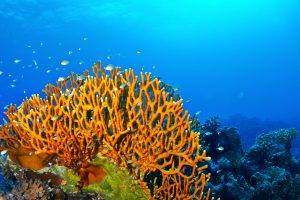
Show some style
If you feel like you need to support yourself in the water and use your fingers, or worse your hands to keep yourself off the coral or ocean floor then you need to work on your buoyancy. Buoyancy control is one of those things that takes divers a while to learn and even longer to master. So, if you’re new to diving and still in the learning phase remember to keep your distance from the reef and from the ocean floor.
Maintaining awareness of where you are in the water is extremely important. While it’s easy to keep your hands to yourself, some divers forget their fins can do just as much, if not more damage. Some corals only grow 2cm or less a year. An accidental kick can destroy years of growth in less than a second. Kicking up sand when low to the floor worsens visibility and is a sure way to annoy the divers behind you.
Courses aimed at improving buoyancy and movement in the water are highly recommended, particularly if you want to take photos underwater. You’ll learn different finning techniques, moving with the breath, stream-lining equipment and how to ensure you’re weighted correctly for the equipment and wetsuit you’re wearing. As an added bonus, you’ll feel more comfortable and relaxed in the water. You’ll be able to better enjoy your dives and appreciate the marine life around you.
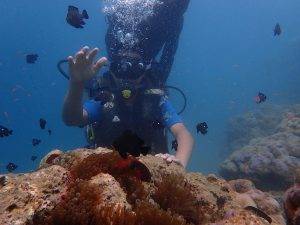
Trying to help
Unfortunately, when diving or snorkelling we sometimes come across animals that are injured or caught in trash such as lines and nets. Getting close to marine life, even if it’s to help can be distressing for them. Also, removing lines and nets can often take longer that we originally thought. Where possible, get the assistance of a professional. Alert the divemasters and instructors in your group – they may have experience in these situations and are probably better able to control their movements and buoyancy while removing the tangled trash. You may also want to contact your local animal rescue organisation or marine authorities if you or your group hasn’t been able to help, or the problem is a large one such as nets covering part of a reef.
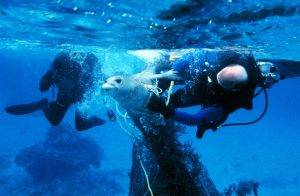
You’ve got the power!
Just in case you’ve forgotten – you’ve got the power! The power to lead by example. The power to speak up and spread the word. The power to choose (wisely!).
Human beings, by and large, are sheep. We are followers. We copy the behaviours and actions of others. So, if you’re diving or snorkelling with friends or a group of random strangers then make an effort to lead by example. Don’t touch marine life and your buddies are likely to do the same.
Increasingly, marine park authorities are setting rules and guidelines for reef interaction. A good divemaster’s briefing should include a reminder not to touch, tease or take anything. Unfortunately, sometimes that’s not enough. Some divers either haven’t listened to the briefing or just don’t care. If you see another diver doing something they shouldn’t then take the time to remind them of their responsibilities underwater. If you don’t feel comfortable speaking to the diver about what they’ve done, raise it with the group leader or divemaster.
The same goes for dive and snorkel operators. If you come across an operator behaving inappropriately be sure to report it to marine authorities and diving’s governing agencies such as PADI or SSI. You have the power to choose where you spend your money. So, make it count. Do your research and get recommendations. There are countless website, groups and forums that discuss and review dive and snorkel operators. Specifically, Green Fins works with dive and snorkel operators to ensure sustainability and protection of marine life by the industry, and rank operators on their website.
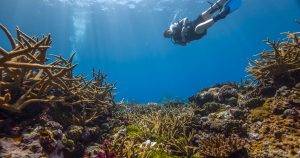
In short…
Don’t touch marine life. It can be as harmful to you as the creatures receiving your attention! Even if your actions are those of just one individual, consider the effects when multiplied by the many divers and snorkellers that visit the ocean each year.
Diving is a privilege and should always be considered as such. As divers we are the lucky few who get to explore the underwater world. In doing so we should take care to protect it. Take nothing but photos, leave nothing but bubbles.


